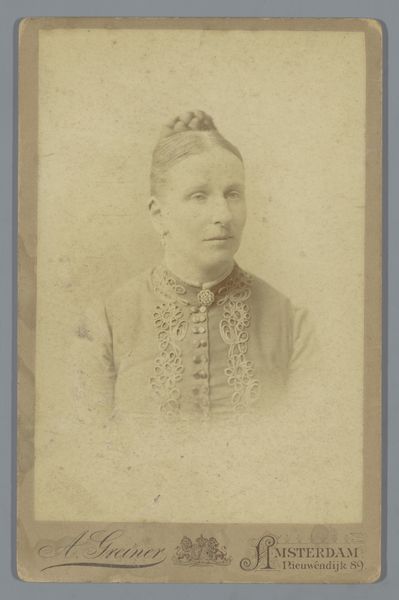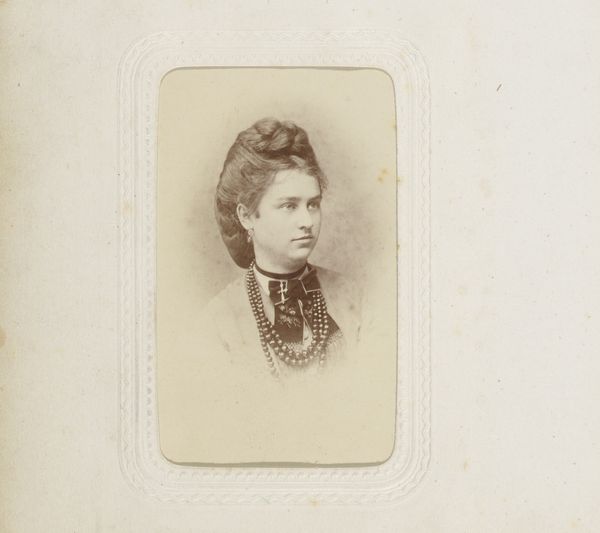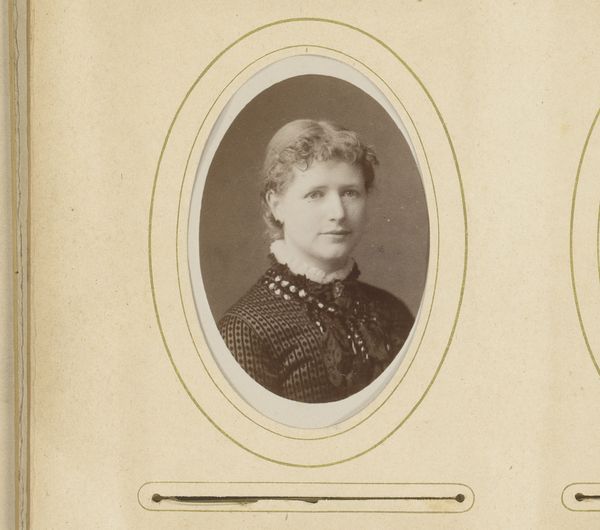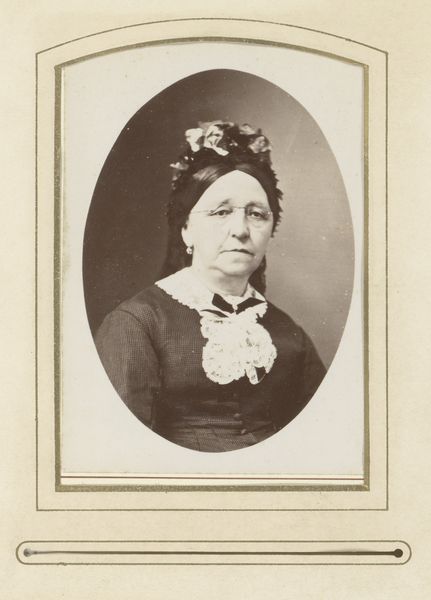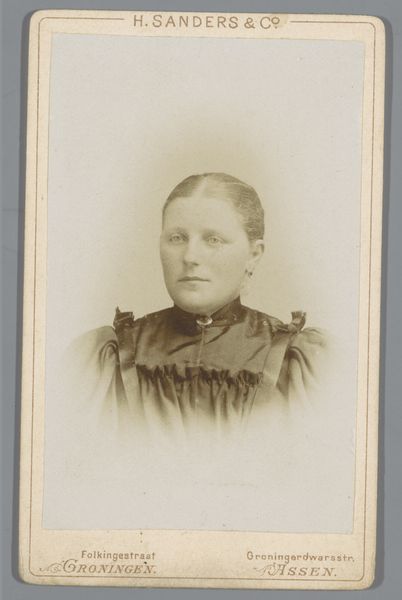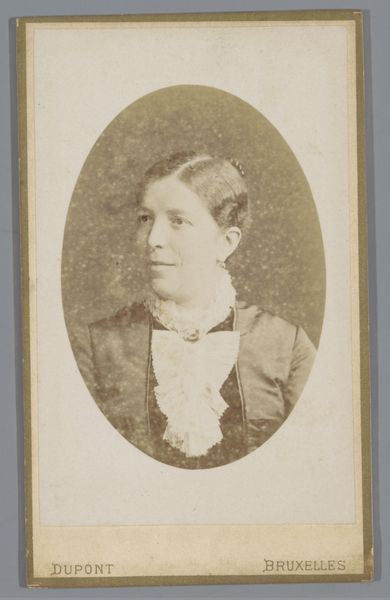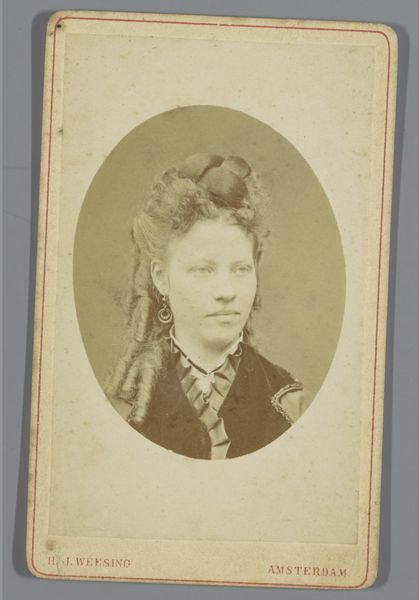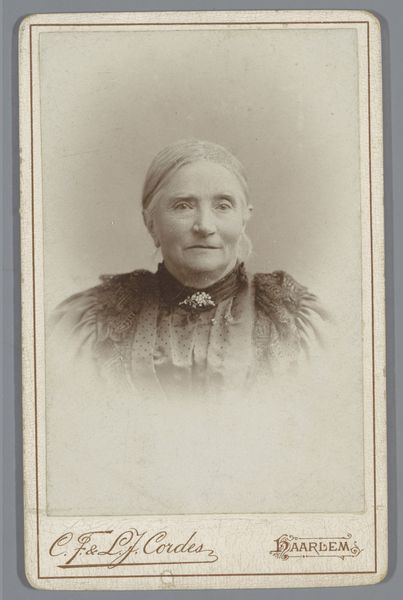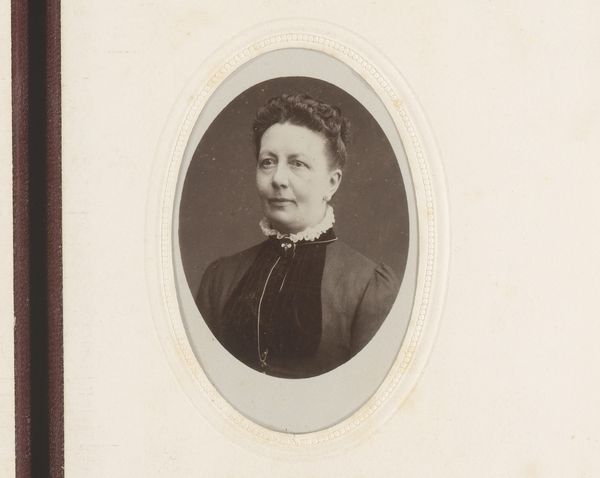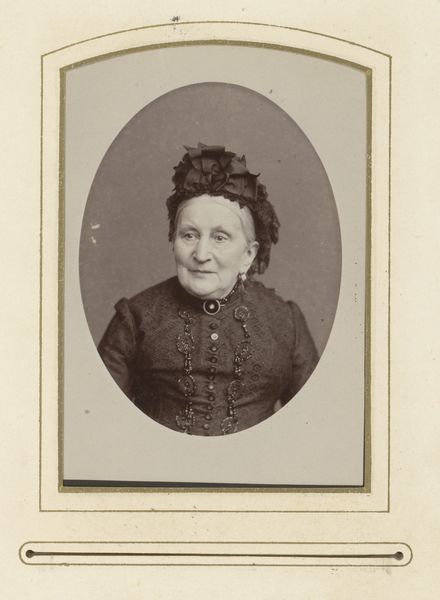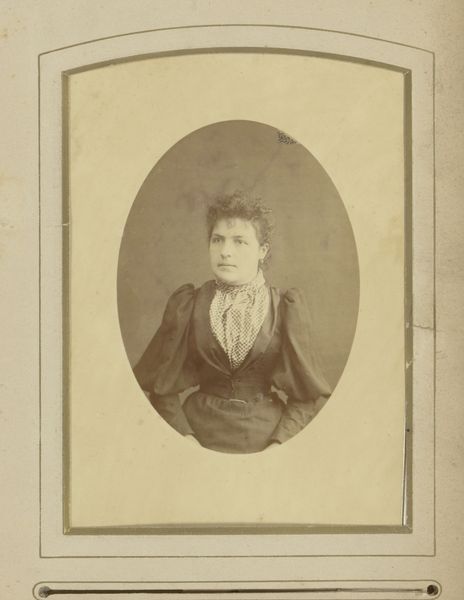
photography
#
portrait
#
photography
#
19th century
#
realism
Dimensions: height 138 mm, width 98 mm
Copyright: Rijks Museum: Open Domain
Curator: This photographic portrait from between 1863 and 1880 is simply titled "Portret van een vrouw," or Portrait of a Woman, and comes to us from the artist, Jan Hendrik Garlinck. Editor: It's captivating. The way the light falls on her face gives her a stern, almost confrontational air. You immediately wonder about her story, what role she played in society, what her life entailed. Curator: Well, during this period, photography studios flourished, offering portraits to a broader public than ever before. This image speaks volumes about the rise of the middle class and their desire to record their presence for posterity. Photography was becoming democratized. Editor: Exactly, look at the detailing on her dress and collar— likely something she made herself. The craft and the labor that went into it is substantial. I wonder about the types of materials available to her and if this outfit marks her status. Curator: Her gaze holds power, though. During the 19th century, women were frequently objectified or idealized, and portraits were often used to emphasize beauty over individuality. This woman exudes self-possession. Editor: True, but this could still be partly performative. Photography, especially portraiture at the time, was not about capturing a completely natural image. The process demanded stillness, deliberate posing and, yes, even control. Think about what went into capturing such an image at this time. Curator: Point taken, but it's important to consider what it meant for women to begin taking control of their own image through these increasingly available channels. This photograph also reflects a larger dialogue of identity and self-representation during that time period. It’s about claiming agency within society. Editor: Well said. It's like a frozen moment from a social tapestry. What I see in the piece is that this image goes beyond documentation—it raises more questions about how individual status relates to societal norms and accessible modes of art and manufacture at the time. Curator: Agreed. This image captures the emergence of photography as a powerful force in shaping identity and democratizing access to art and visibility.
Comments
No comments
Be the first to comment and join the conversation on the ultimate creative platform.
